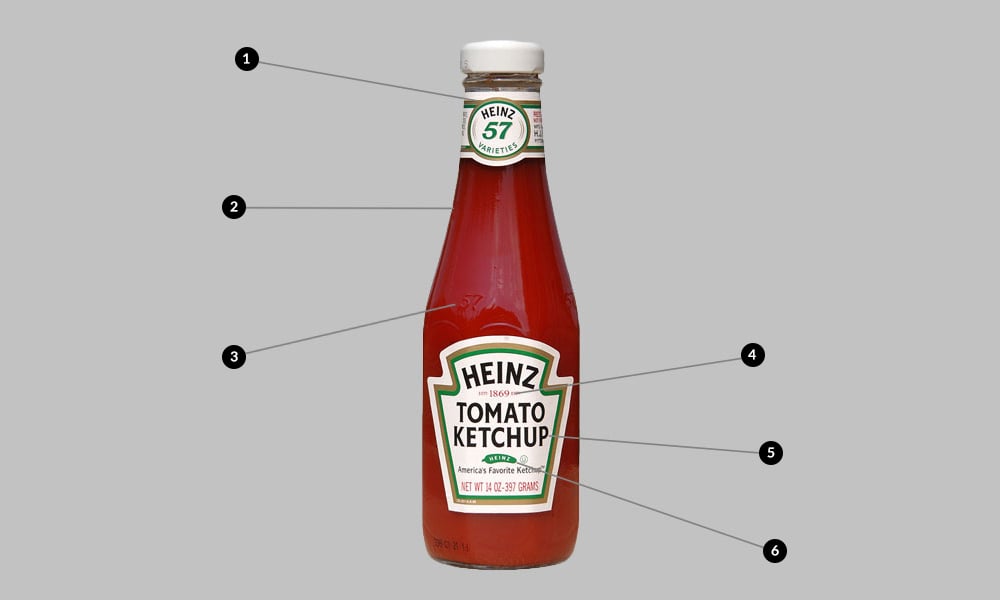Whether to top a burger or to dip some fries, the ketchup of choice is almost always Heinz. The famous ketchup has been produced for well over 100 years and annual sales now reach around $1.5 billion. But how much do you know about the king of condiments? Here’s a little history and insight into the label and the bottle of the bbq staple.
- 1. Heinz 57 Varieties: There are not 57 varieties of Heinz ketchup. Henry J. Heinz simply took his favorite number (5) and his wife’s (7) and put them together to try and explain the wide range of products the company made. The idea was inspired by a sign Heinz saw advertising 21 styles of shoes.
- 2. Clear Bottle: Early preservation techniques left much to be desired. It wasn’t uncommon to find tomato ketchup with mold, dirt from the factory, or other awfulness inside. Henry J. Heinz wanted to show that his ketchup had nothing to hide, hence the clear bottle.
- 3. Raised 57: While many people believe this is the spot you’re supposed to tap the bottle to help the ketchup come out, the truth is you’re supposed to tap the “57” label around the neck with two fingers to achieve optimal effect.
- 4. Est. 1869: While the Heinz company was started in 1869, their tomato ketchup was not introduced until 1876. The company’s first product was horseradish.
- 5. Tomato Ketchup: It’s labeled ‘Tomato Ketchup’ because, despite what we’ve come to believe, ‘ketchup’ isn’t necessarily a tomato-based sauce. Ke-tchup sauce has actually been around since at least 544 A.D., and has been made with everything from fish bladder to walnuts. Tomato ketchup became popular in the mid-1800s.
- 6. Heinz Pickle: At the 1893 Chicago World’s Fair, Henry Heinz attracted people to his booth by offering a free small green pickle charm




